SO MUCH TO OFFER
Have you ever thought about visiting Copenhagen during the holiday season? For a weekend maybe? No…?! Copenhagen has so much to offer, even in the winter and especially during the holiday season. From fun Christmas markets, beautiful castles, and bustling canals to a great culinary scene and historic Tivoli Gardens that transform into a magical winter wonderland. Read “Lots of Reasons to Visit Copenhagen in the Wintertime” and I’m positive you’ll change your mind. If not, this guide is also great if you prefer to visit Copenhagen some other time; – just extract everything Christmasy.
To travel is to live. – Hans Christian Andersen
Much to be said about the weather
There is a saying: “There is no such thing as bad weather, only inappropriate clothing.” I guess, it emphasizes the importance of being prepared and properly dressed for varying weather conditions rather than complaining about the weather itself. However, I have yet to see a place where no one complains about the weather one way or the other. Too cold, too hot, too windy, too humid.
For many years we avoided traveling to Denmark in the winter. That is something I truly regret. The first thing I would say, If someone asked me about visiting Denmark, was “Please go in the summer!! The weather will be nicer.” But there is no guarantee that the weather will be great in Denmark, not even during summer. Sometimes it rains most of this much anticipated season, and sometimes it’s hot and humid, but most times…it just depends. So why even consider visiting Denmark in the winter? Well, keep reading and find out why.
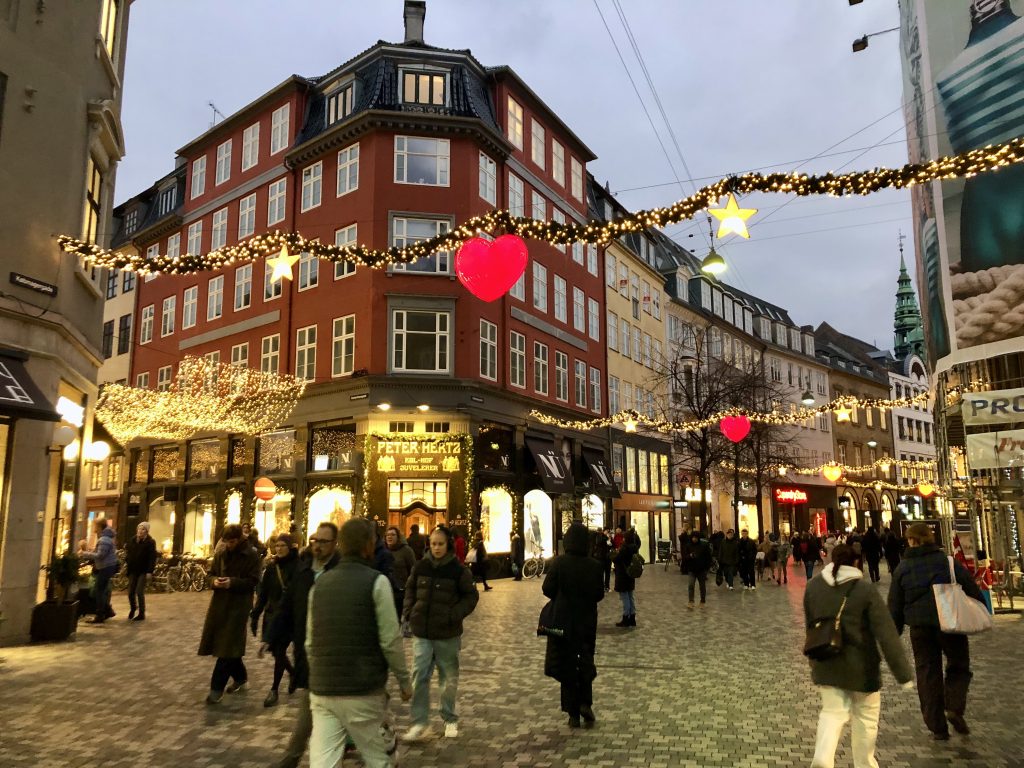
The heart of Copenhagen during the holiday season
Dress Warm!
My first recommendation for a great experience while visiting Denmark during wintertime is to bring warm clothes. Also, never put your coat in the checked-in luggage on your flight because, maybe it gets stuck in transit somewhere, like…New York. Remember to bring a nice beanie and mittens as well. Or, better yet buy some nice ones at one of the numerous Christmas markets. You might not need any of it, but it will improve your experience tremendously if it turns out to be cold.
Hygge
Copenhagen is a very walkable city. Popular shopping streets like Strøget and Købmagergade or the dining district Nyhavn, are for pedestrians only. This gives Copenhagen a small-town feel and you’ll quickly get the impression that keeping warm is more than dressing warmly. It’s how you get warmed up from the inside when everything around you is beautifully decorated with ornaments and lights, and the smell of Christmas fills the air. It comes from sipping hot chocolate or Gløgg (spicy mulled wine) while eating æbleskiver (Danish pancake puffs) with powdered sugar. Or from being present and enjoying the simple things in life.
In Denmark, we call this warm and fuzzy feeling, HYGGE. The holiday season is the best time of the year to experience “hygge”! Please note that in the wintertime it gets dark around 3 pm which is a good thing, because it makes it possible to see all the Christmas lights better.
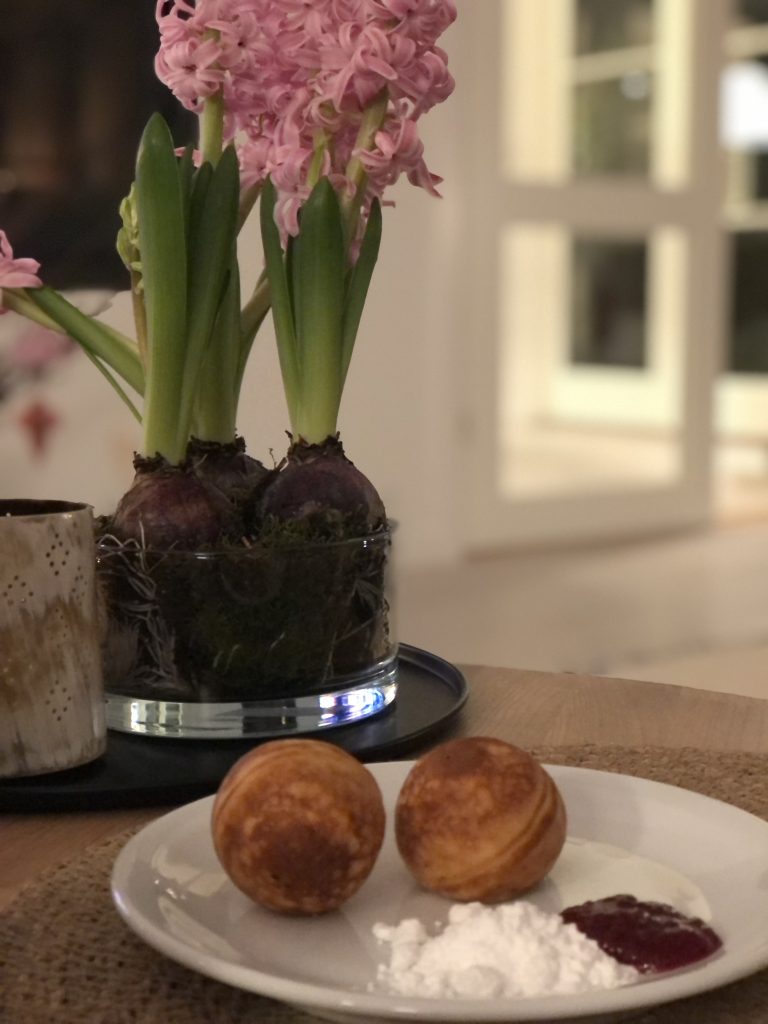
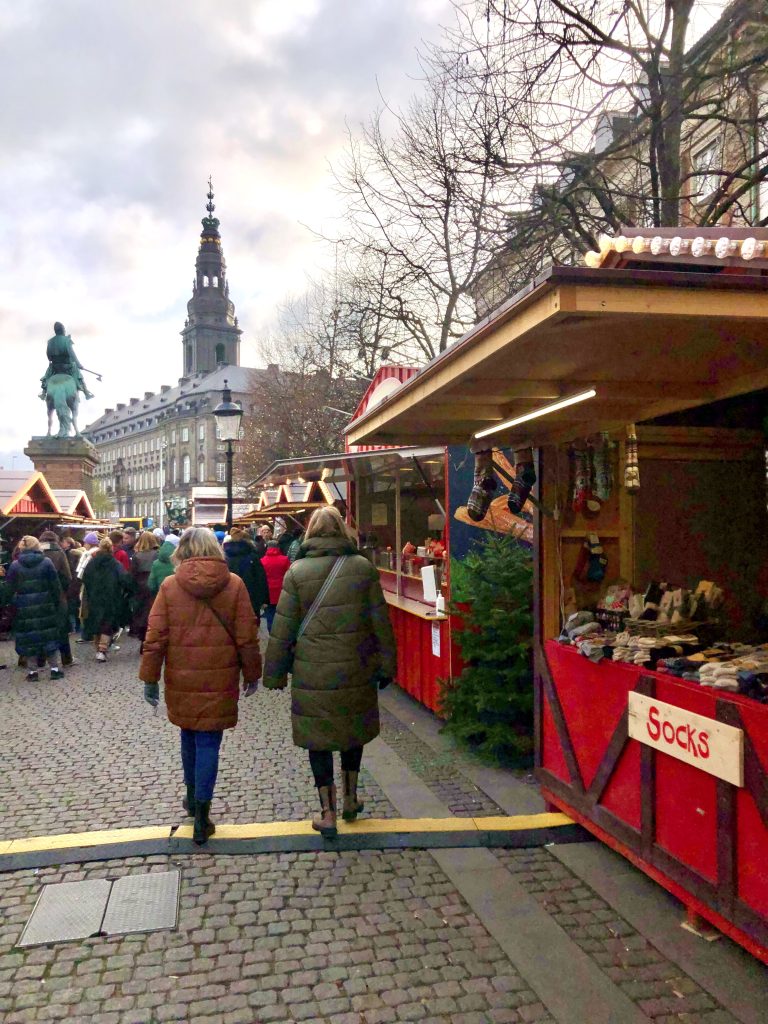
Æbleskiver (Danish pancake puffs) with powdered sugar and a Christmas market
Torvehallerne – food market
I recommend starting your tour around Copenhagen from Nørreport Station. There is a huge parking garage underneath Israel’s Square behind Nørrebro Station if you decide to drive. Otherwise, it’s very easy to get around Copenhagen by bus or subway. One particular rewarding feature of exploring Copenhagen from this starting point is that Torvehallerne is located right above the parking structure. Torvehallerne is a popular food market where you’ll be surrounded by a vibrant and bustling atmosphere while walking through the two large glass halls. There are so many culinary temptations at this market, and you can make a quick stop for a snack or a drink at one of the more than 60 stalls. Just make sure to save some room for later.
A Biking culture
When crossing Nørreport Station, the first thing you’ll notice is a very defining feature of Danish culture – thousands of bikes! Cycling is deeply integrated into daily life and reflects the country’s commitment to environmental sustainability. This is important to consider when driving a car – “In Denmark, the bikes own the streets!”. Read more about how to explore Copenhagen on a bike.

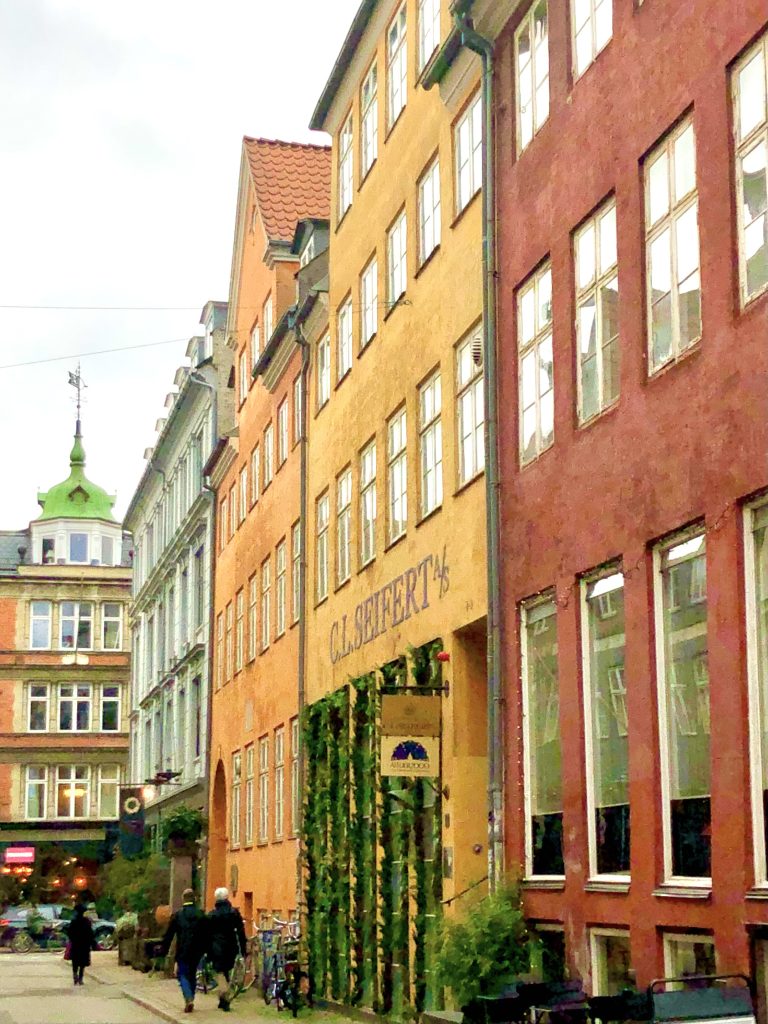
Bikes at Nørrebro Station and colorful buildings
Rundetårn – Round Tower
Most times while visiting Copenhagen we walk down Frederiksborggade towards Strøget and enjoy the many shopping opportunities, cafes, and restaurants. At Kultorvet you’ll be met by a big fountain, restaurants, and a few outdoor stalls selling flowers and fruit. The small market is more lively in the summer but will still sell seasonal goods during the winter.
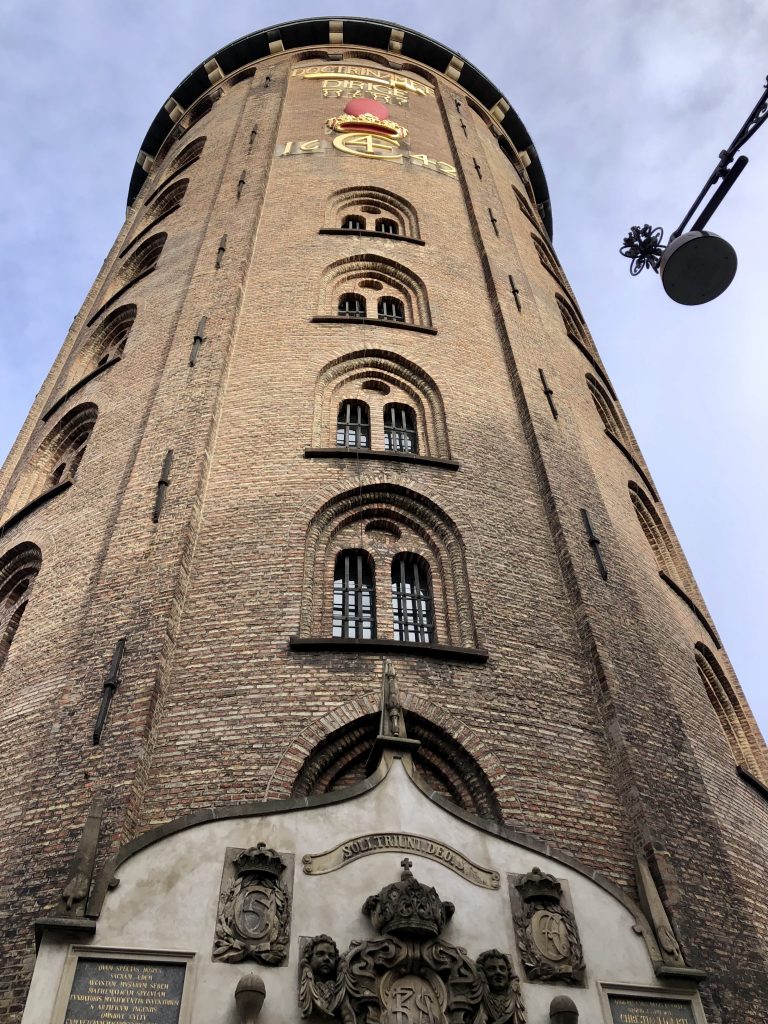
Rundetårn – The Round Tower
Continue down Købmagergade where you’ll see Rundetårn, a must-visit historical building. Rundetårn which literally means round tower is known for its unique architectural feature; a wide cobbled spiral ramp that ascends to the top instead of stairs. This special feature was designed for horses and carriages to transport heavy loads to the observatory at the top of the building. It’s not exactly the Eiffel Tower but there is something special about walking up the historic ramp and enjoying the panoramic view of Copenhagen from the tower’s observation deck.
Strøget
At the end of Købmagergade is Strøget, the longest pedestrian street in Europe, spanning approximately 1.1 kilometers from the City Hall Square (Rådhuspladsen) to the King’s New Square (Kongens Nytorv). It features a mix of international brand stores, high-end boutiques, and designer shops. In my opinion, the most interesting features of this street are outside the stores. Historic buildings and landmarks, blend modern commerce with Copenhagen’s architectural heritage. Don’t forget to look up, where you’ll see a mix of Renaissance, Baroque, and Art Nouveau-style architecture with steep-pitched roofs, gables with ornate decorations, copper roofs, and floral motifs.

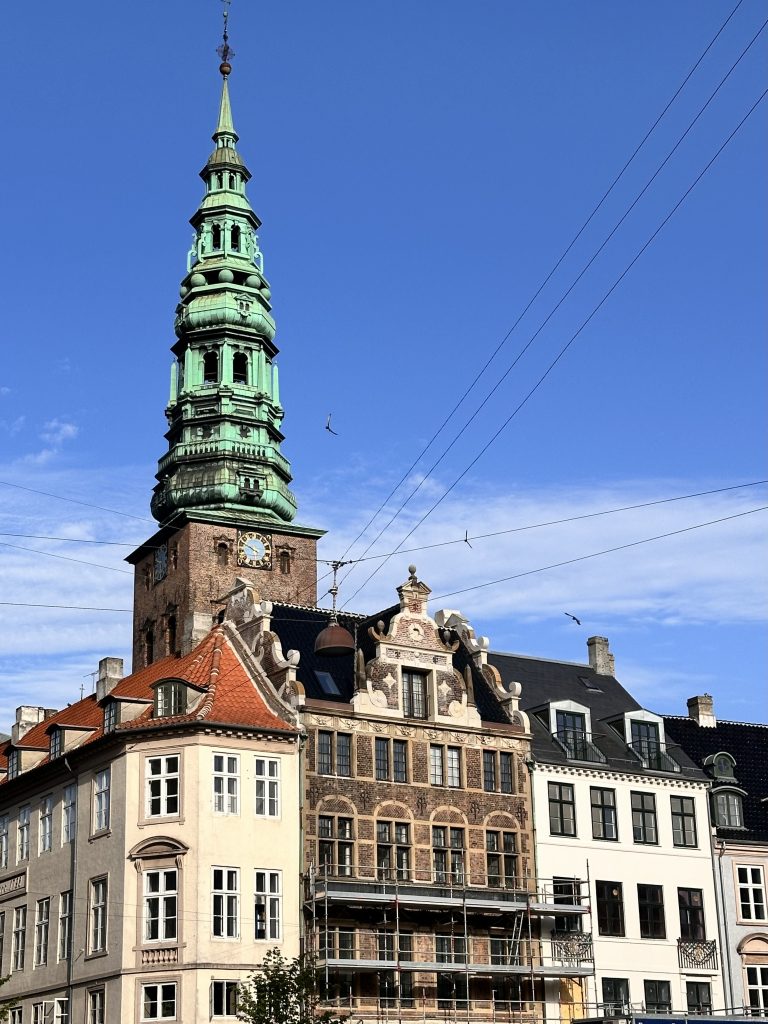
Beautiful rooftops are everywhere in Copenhagen
If you’re keen on having brunch or lunch up high, Illums Rooftop at the corner of Strøget and Købmagergade features a mix of restaurants, bars, and food markets on the 4th floor. It has indoor and outdoor seating and great views.
The Stork Fountain
The Stork Fountain (Storkespringvandet) is the first thing you’ll notice as you reach Strøget. The fountain is an architectural as well as a cultural icon, and a popular meeting point. During the holiday season (from early November through December), several Christmas markets will be shattered around this area and it’s hard to resist the smell of bratwursts, roasted almonds, and spicy Gløgg from the small wooden stalls. This is the place to look around if you need a few souvenirs or a pair of warm, knitted mittens.
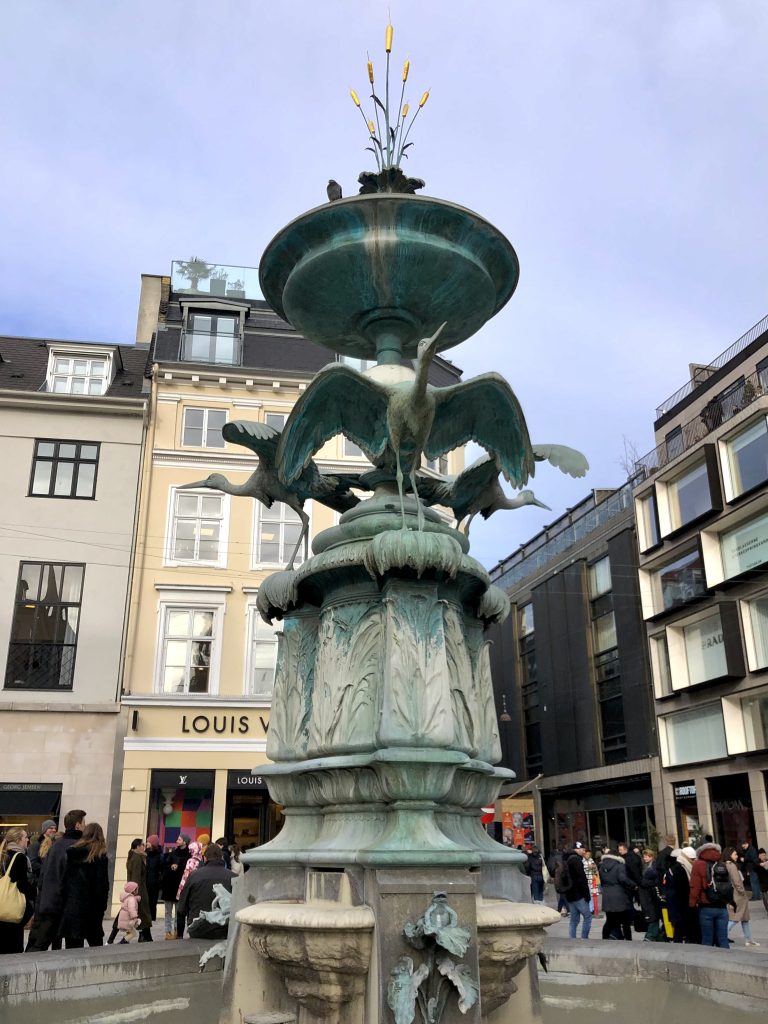
The iconic Stork Fountain
Strolling Down Strøget – Walking Left
King’s New Square
Whether you walk to the right or left on Strøget you’ll have two very different experiences. They are both a must! Walking left will take you to the King’s New Square a central and beloved part of Copenhagen. A focal point at the center of the square is an equestrian statue of King Christian V. Historical buildings such as the Charlottenborg Palace, Magasin du Nord, and The Royal Danish Theater – Old Stage (Det Kongelige Theater – Gammel Scene) are placed along the square. During the holiday season, the King’s New Square will also feature a Christmas market.
Located at the King’s New Square you’ll find Hviids Vinstue, one of the oldest wine bars in the city. This historic institution from 1723 is known for its delicious Gløgg during the winter season. Don’t let the crowds scare you, it’s worth the hustle!
Please note that I have mentioned Gløgg several times as this hot beverage is a must-try while visiting Copenhagen during the holiday season. Best served with æbleskiver (Danish pancake puffs). Trust me!
Nyhavn
Across from the King’s New Square is Nyhavn, a historic 17th-century waterfront where picturesque pastel-colored townhouses reflect on the water along the canal. The canal is filled with historic wooden ships and the townhouses have been converted into lively bars, cafes, and restaurants. Nyhavn gets quite busy but it has an irresistible charming and lively ambiance. I always take a leisure stroll in Nyhavn when visiting Copenhagen. The holiday season only enhances this area with festive lights and even more Christmas markets.
Situated at the waterfront, at the end of Nyhavn, you’ll find The Royal Danish Playhouse (Skuespillerhuset), an impressive structure worth a visit. From the Playhouse, there is quite a nice walk along the harbor to the area around Amalienborg Palace, the Little Mermaid, and the Kastellet Fortress.
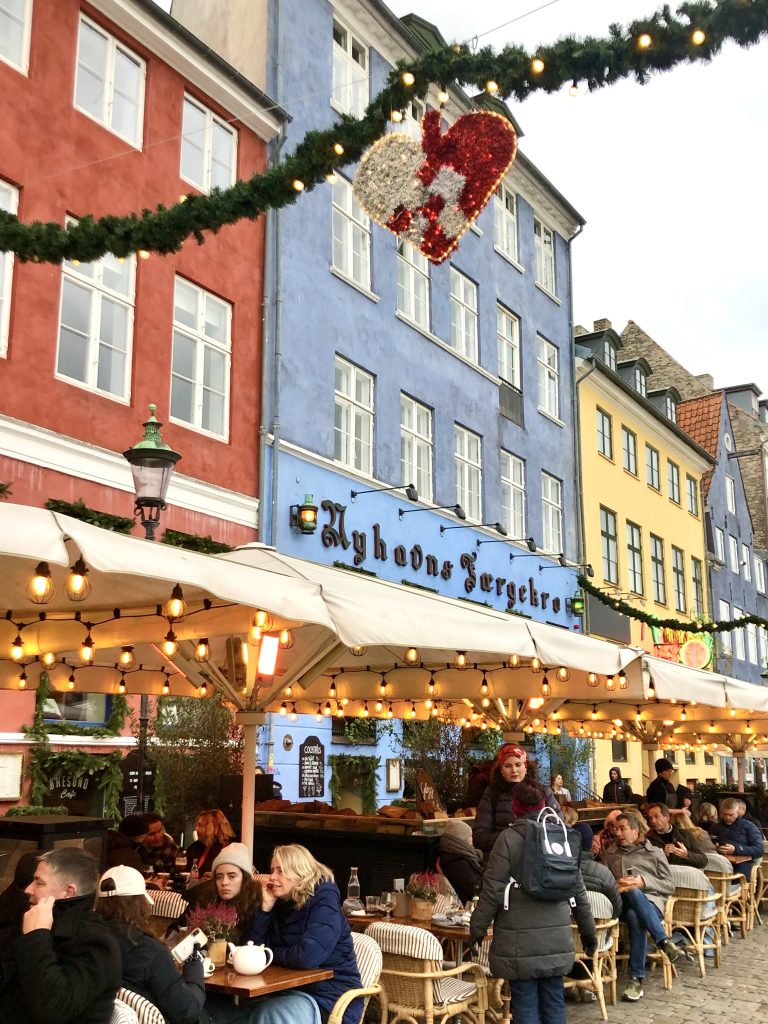

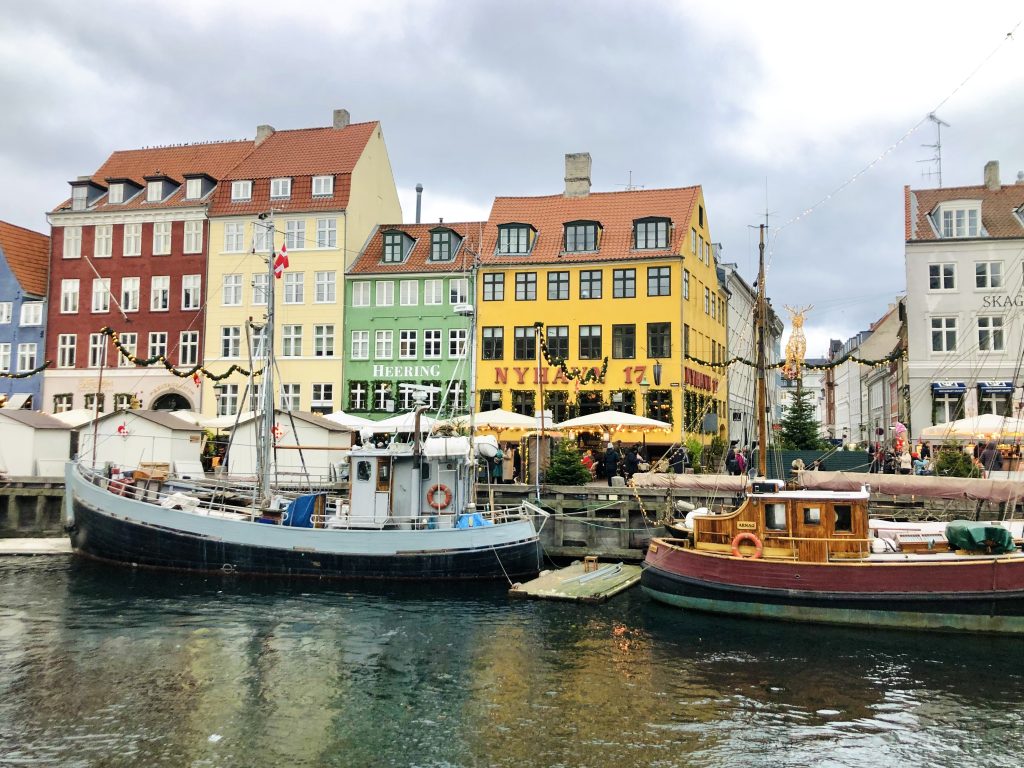
Colorful Nyhavn – a great reason to visit Copenhagen in the Winter
Amalienborg Palace
A short walk from Nyhavn you’ll find the impressive residence of the Danish Royal Family, Amalienborg Palace. The changing of the Royal Life Guards (Den Kongelige Livgarde) at Amalienborg Palace is a ceremonial event that takes place year-round regardless of the season or the weather. At noon every day, new guards, dressed in distinctive uniforms including bearskin hats, march through the city from Rosenborg Castle to take over duties, protecting the Danish monarchy. On special occasions, the ceremony is accompanied by the Royal Life Guard’s band, adding to a festive atmosphere.
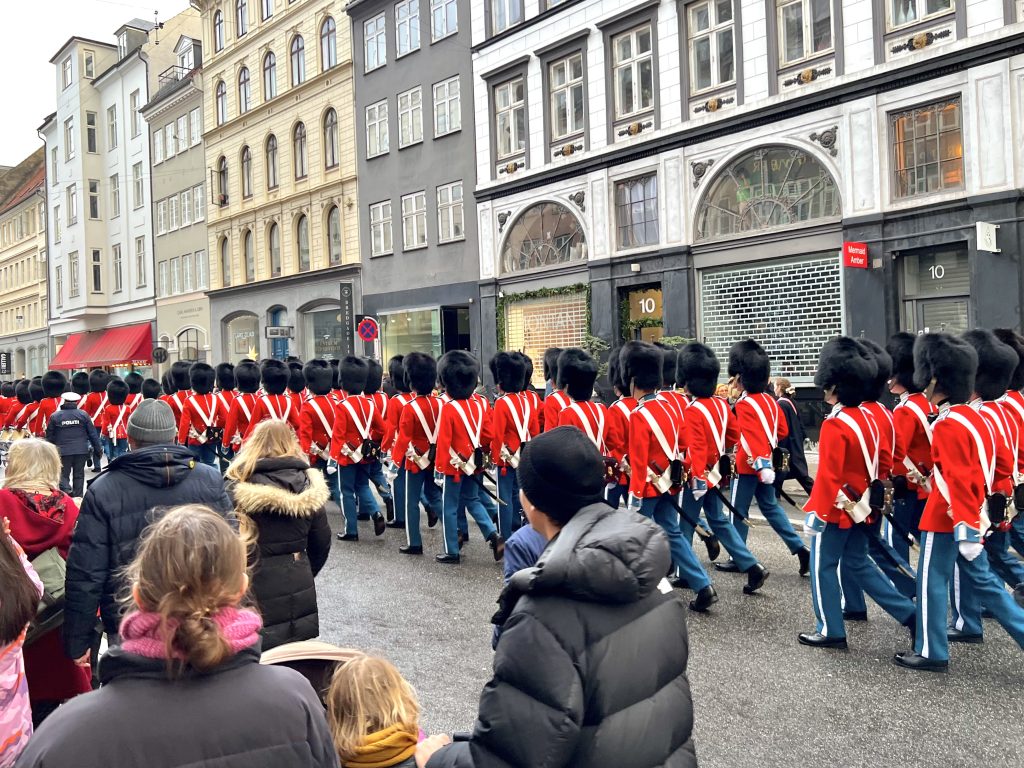

The Royal Life Guards marching through Copenhagen to Amalienborg Palace
Canal Tour
I think one of the best and most scenic ways to explore Copenhagen is taking a canal tour. Most tours start at Nyhavn. They typically last 1 to 1.5 hours and are available year-round. I have yet to take a tour in the winter but the boats are covered and heated so it should be fine.
Copenhagen is home to several notable churches and historic buildings that can be seen on this tour. If you get cold most of these can be explored from the inside as well.
- Amalienborg, The Royal Palace
- Marble Church (Frederiks Kirken), known for its stunning rococo architecture and distinctive green copper dome
- Christiansborg Palace, the seat of the Danish Parliament
- Opera House
- Black Diamond, the Royal Library
- Church of our Saviour (Vor Frelsers Kirke), famous for its helix spire with an external winding staircase
- Kastellet Fortress, a picturesque star-shaped layout with historic buildings
It is always nostalgic for me to pass by the Little Mermaid, the iconic statue inspired by Hans Christian Anderson. Regardless of its size, it’s one of the things people around the world associate most with Denmark.
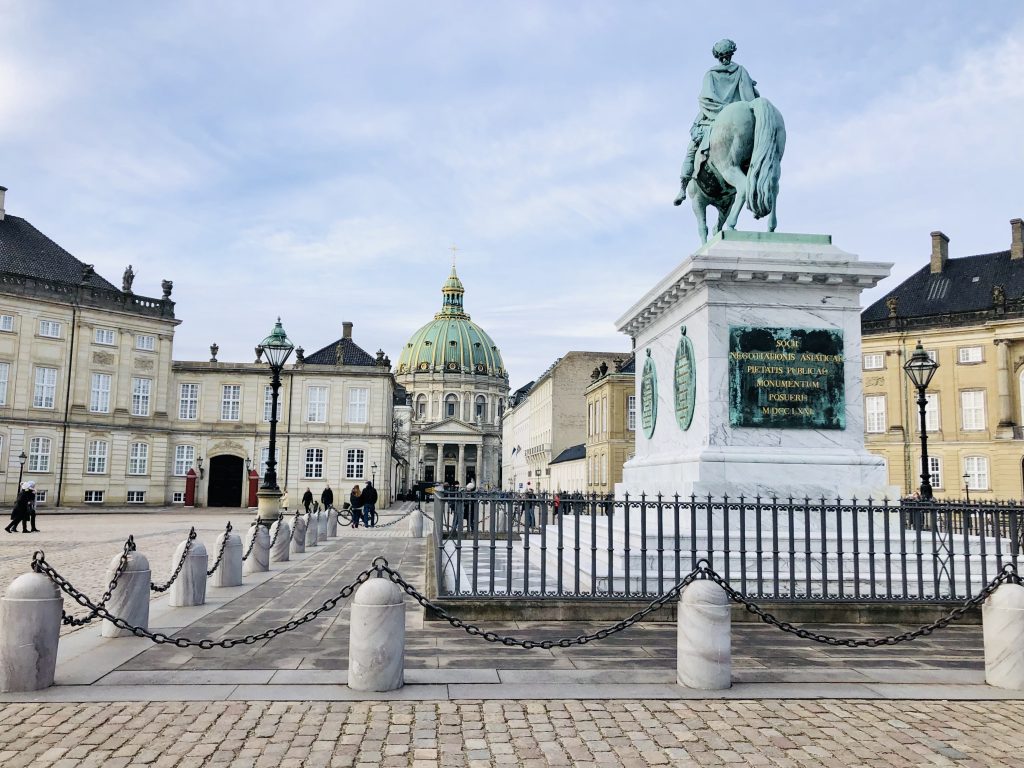
Amalienborg Palace
Christianshavn
My favorite part of the canal tour is navigating under numerous low bridges through the narrow canals of Christianshavn. It is highly recommended to explore this neighborhood on its own. The colorful houseboats along the canals, old warehouses converted into cool apartments and offices, cobblestone streets, and historic buildings all add to a bohemian and artsy vibe of this neighborhood. A notable landmark in Christianshavn is the Church of our Saviour (Vor Frelsers Kirke).
Within Christianshavn you’ll find the self-proclaimed autonomous neighborhood Freetown Christiania. It is known for its vibrant street art and alternative living, operating independently of the Danish government. Not sure if they are into Christmas decorations at Christiania, but it’s worth a visit.
Strolling down Strøget – Walking Right
Tivoli Gardens
Walking to the right on Strøget will take you to the City Hall Square and Tivoli Gardens. During the holiday season, this historic amusement park from 1843 transforms into a magical winter wonderland. It is beautifully decorated with thousands of twinkling, colored, fairy lights, festive ornaments, wreaths, an ice skating rink, and Christmas trees. Nothing matches the festive atmosphere of the Christmas market inside Tivoli as you walk around the charming wooden stalls and the sound of holiday music fills the air. Late afternoon or evening is a great time to visit Tivoli.


Tivoli Gardens at night
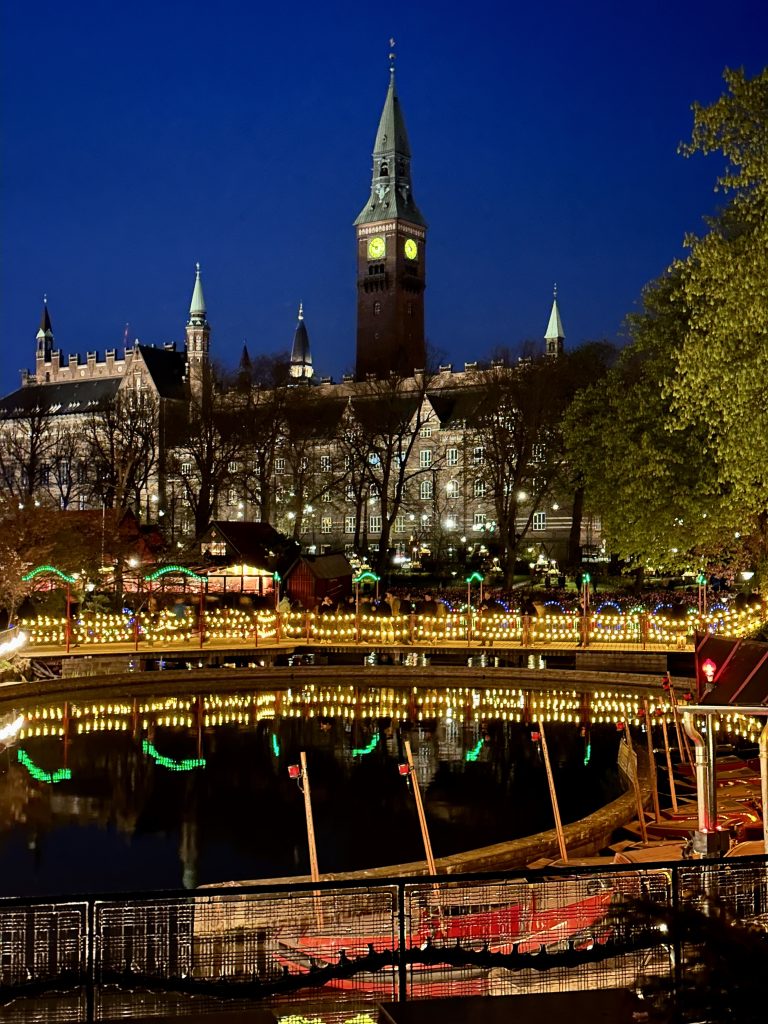
Copenhagen City Hall seen from Tivoli Gardens at night
Dining at Tivoli
Some of the attractions in Tivoli are open during winter but most people come for the festive atmosphere. There is a wide selection of restaurants inside the park, from sophisticated dining like the iconic Nimb and Påfuglen to a food hall featuring 15 food stalls, serving everything from burgers and pizza to ramen and traditional smørrebrød (open-faced sandwiches).
If you time your visit right, Tivoli hosts concerts and other holiday performances that add to the enchanting experience and make it a must-visit during the holiday season. The Pantomime Theater is a traditional and beloved part of Tivoli, winter as well as summer.
More things to do in Copenhagen
There are so many things to do in Copenhagen and the adjacent neighborhoods. If you have more time I suggest you check out this list of fun things to explore….even during the wintertime.
- Ny Carlsberg Glyptotek, located near Tivoli, features an impressive collection of ancient and modern art. The museum’s winter garden and beautiful architecture are something worth exploring.
- National Museum, Denmark’s largest museum of cultural history.
- Planetarium, explores the wonders of the university through immersive shows and exhibits.
- Rosenborg Castle in the King’s Garden (Kongens Have).
- Botanical Garden, a beautiful and tranquil oasis located close to the Nørreport Station. The large glasshouse, the Palm House is one of the most popular attractions.
- Copenhagen Lakes (Søerne), a popular recreational area with a series of interconnected lakes.
- Meatpacking District (Kødbyen), the center of the city’s meat industry transformed into a trendy and lively neighborhood with old warehouses repurposed into modern venues.
- Vesterbro neighborhood, everyday hip lifestyle with a bit of the neighborhood’s authentic vibes.
- Østerbro neighborhood, elegant and trendy, and the greenest neighborhood in Copenhagen.
- Nørrebro neighborhood, a true melting pot of all things delicious, fun, and vibrant.
And more!
Read more about the different destinations on our midlife journey in the travel journal
Read more about trying to navigate midlife in the midlife journal

